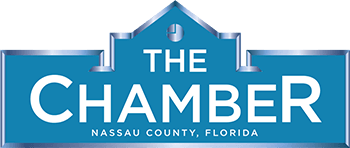Florida Division of Emergency Management Recognizes September as Florida Preparedness Month and Historical Peak of the Atlantic Hurricane Season
TALLAHASSEE, Fla – This week, Governor Ron DeSantis issued a proclamation declaring September as Florida Preparedness Month in conjunction with the Federal Emergency Management Agency’s “Ready” Campaign, National Preparedness Month. The Florida Division of Emergency Management (Division) observes September as Florida Preparedness Month and focuses on the importance of Florida residents and visitors being aware of and preparing for natural and man-made hazards.
“With one category three storm already making landfall this season, I implore residents to take time now to make a disaster plan, know their evacuation zone, and have a way to receive weather alerts,” said Division Executive Director Kevin Guthrie. “September is the historical peak of hurricane season and your time to prepare for the next storm that may impact our state is now.”
The Division continues to support ongoing response and recovery efforts in the Big Bend communities impacted by Hurricane Idalia by fulfilling missions and providing personnel for local county Emergency Operations Centers. To date, over 1,000 missions have been completed with an addition 700 in progress.
The 2023 Atlantic Hurricane Season runs until November 30, with September marking the historical peak of hurricane season. During this time, every household and business is encouraged to take the necessary steps to finalize their disaster preparedness plans.
No-Cost and Low-Cost Preparedness Measures for Floridians
- Make a Plan – Each household should have a disaster plan specific to the needs of everyone in their household, including consideration of children, pets, and seniors. Everyone in the household should assist in developing the emergency plan and understand the plan. Visit FloridaDisaster.org/PlanPrepare for more information.
- Have Multiple Ways to Receive Weather Alerts – Every household should have multiple ways to receive weather alerts and follow all directions from local officials. Residents are encouraged to have a battery-operated or hand-crank weather radio to ensure they can continue to receive alerts from the National Weather Service in the event of power outages or damaged cell towers.
- Know Your Zone, Know Your Home – It’s important for residents to know if they live in an evacuation zone, a low-lying, flood-prone area, a manufactured home or an unsafe structure during hurricane season. It is important for residents to know their home and its ability to withstand strong winds and heavy rain. This information helps residents better understand orders from local officials during a storm. Visit FloridaDisaster.org/Know for more information.
- Keep Gas Tanks Half Full – Residents should keep their vehicle’s gas tanks at least half full during hurricane season to ensure they have enough fuel to evacuate as soon as possible, without worrying about long lines at gas stations and to avoid gas shortages prior to a storm. For Floridians with electric vehicles, it’s recommended that the battery be maintained between 50% - 80% capacity at all times, depending on the type of vehicle and what the vehicle’s manual recommends. Visit FloridaDisaster.org/HalfwayFull for more information.
Visit FloridaDisaster.org for emergency information and to learn more about Florida hazards.
To donate to the Florida Disaster Fund visit VolunteerFlorida.org/donate, to support Hurricane Idalia recovery efforts.
National Preparedness Month and Florida Preparedness Month are observed every September. The national public service campaign is designed to educate families and communities on the importance of disaster mitigation, preparedness and response. More information on National Preparedness Month can be found here.
